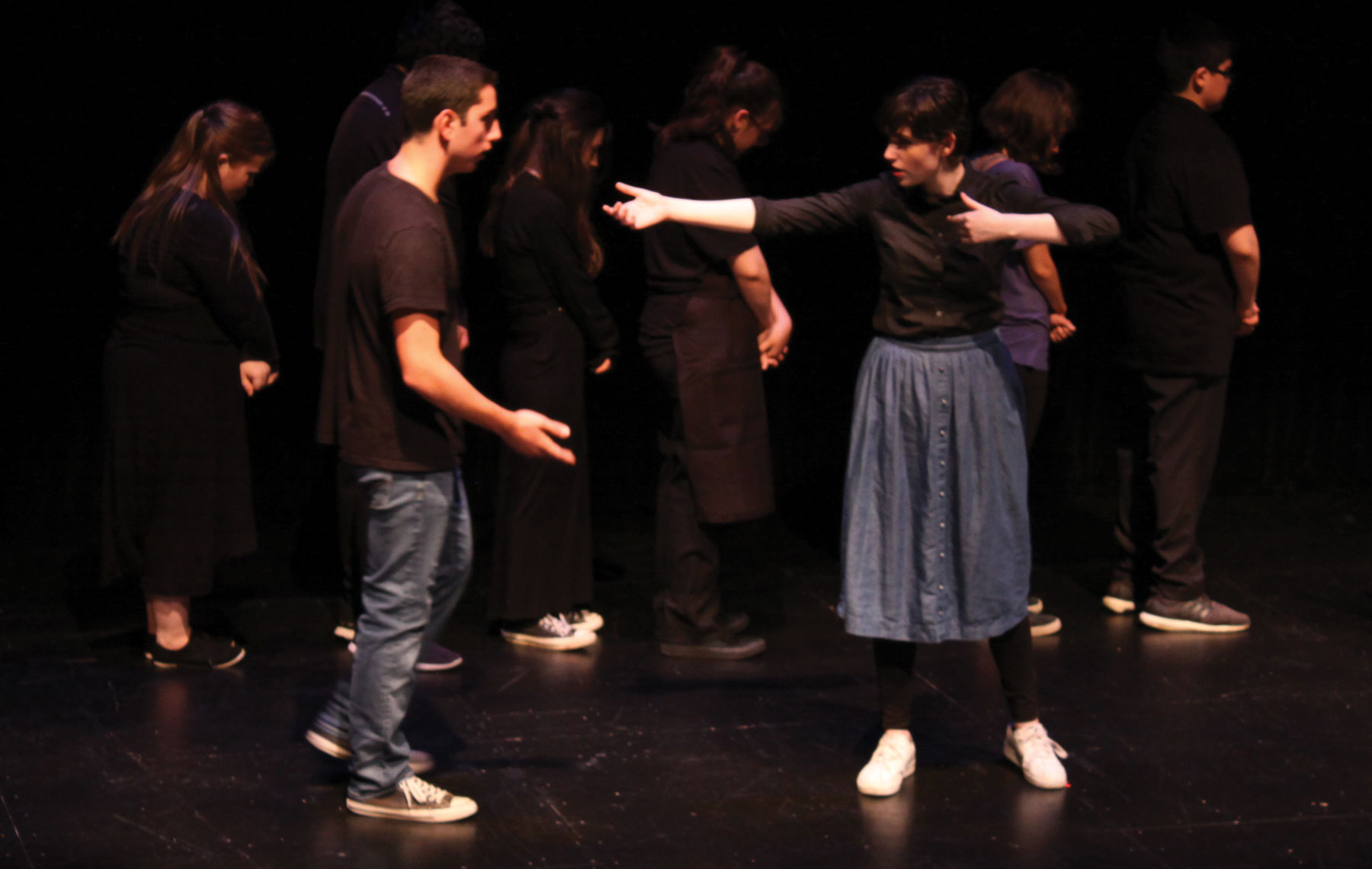 Eli Susman and Eliana Axelrod | Photo courtesy of L.A. Museum of the Holocaust
Eli Susman and Eliana Axelrod | Photo courtesy of L.A. Museum of the Holocaust Admittedly nervous, 16-year-old Eli Susman sat on the steps outside the Wallis Annenberg Center for the Performing Arts in Beverly Hills and ate shawarma — his preshow dinner. With minimal acting experience, Susman was tasked with portraying local 91-year-old Holocaust survivor Phil Raucher.
When the stage lights shone down on Susman, stoic and dressed in all black, he pantomimed the digging of a grave inside a German labor camp. “I had to bury my own father,” he cried out to the dark abyss of seats. Even though he couldn’t see him, Susman knew the real-life Raucher, who actually had to bury his own father while detained at a German labor camp over 75 years ago, was watching him.
Susman, together with seven other teens ranging in age from 13 to 18, took the stage on July 25 in the culminating performance of the Los Angeles Museum of the Holocaust (LAMOTH) “Voices of History” program. During the two-week theater workshop, participants wrote and starred in a pair of plays based on the wartime experiences of Raucher and a fellow survivor, 79-year-old Lea Radziner.
“At first, the idea of playing [Raucher] with him sitting there [in the audience] was intimidating,” Susman said. “But once I started getting into it, I was really able to embrace the role and look past that.”
During the workshop, the teens took part in acting exercises, played improv games, listened to the stories of the two survivors and then crafted a two-act play under the guidance of their director, Anne Noble, a professional playwright, actor and arts educator hired by LAMOTH.
Chloe Victoria, 18, is a trained actor who will be studying theater in college this fall and was one of the program’s non-Jewish participants. She has long been interested in Holocaust education and was eager to combine it with her love of performing.
“It was amazing to get to work with people who are as passionate about listening to survivors’ stories as I am,” she said. “I felt a strong connection with them. Together, we felt it was an honor to stage a play and bring the stories to life.”
Radziner also was in the front row at the Wallis to watch her story unfold. She said when LAMOTH asked her to participate in the project, she was reminded of feelings of insecurity about not being perceived as a “real survivor.” As a young child in the early 1940s, Radziner’s parents had her smuggled via the Dutch underground to an adoptive Christian family in the southern part of the Netherlands. She avoided deportation to a concentration camp, a distinction that she said made her story feel “not needed” and “unimportant” for many years.
“We have a kid playing the 91-year-old survivor at 16. There’s something special about hearing that story come out of the mouth of a 16-year-old.” — Anne Noble
But after seeing the performance with three generations of family by her side, Radziner was overcome with emotion. “I don’t know if I have words to thank the children and to say how much I admire what they did,” she said. “It helps me see the importance of stories like mine continuing to be told in new ways.”
Wallis Director of Education Mark Slavkin told the Journal, “Sharing the stories of these survivors and empowering youth to share these stories is what we’re all about. It has been a terrific collaboration. It has been nothing short of inspiring.”
For her part, Noble found inspiration in seeing a group of young actors of varying performance backgrounds lean on and learn from one another in forming “a true ensemble. I found that it didn’t matter what experience they had because they were telling the stories from their hearts,” she said. “We have a kid playing the 91-year-old survivor at 16. There’s something special about hearing that story come out of the mouth of a 16-year-old.”
Raucher agreed. “I was emotional,” he said. “He [Susman] is the age I was. I’m sure he was able to identify, to think about what he would’ve done in that situation. I think he did a very good job. They all did.”






















 More news and opinions than at a Shabbat dinner, right in your inbox.
More news and opinions than at a Shabbat dinner, right in your inbox.